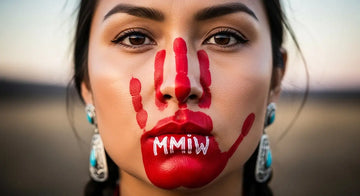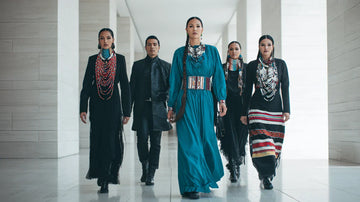The Pacific Northwest, a land of ancient forests, majestic mountains, and a vibrant cultural tapestry, is home to some of the most profound and aesthetically striking indigenous art in the world. Within this rich tradition, certain motifs recur, each carrying layers of meaning, history, and spiritual significance. Among these, the hummingbird stands out – a creature of dazzling beauty, incredible speed, and profound symbolic weight. More than just a pretty bird, the hummingbird in Pacific Northwest Indigenous cultures, particularly in art forms like Haida, Coast Salish, and Kwakwaka’wakw, embodies resilience, joy, love, and a connection to ancient wisdom.
This comprehensive guide delves into the fascinating world of the hummingbird motif, exploring its deep indigenous meaning, its stunning manifestation in contemporary fashion like the Haida hummingbird art jacket, and how you can incorporate this powerful symbol into your own fall and winter wardrobe. We’ll also look at how RezSpirit celebrates and shares these incredible artistic traditions through our collections, including our Orange Day Shirt, Polos, & Hoodies collection, which often features motifs imbued with similar spirit and reverence.
The Hummingbird in Pacific Northwest Indigenous Cultures: A Symbol of Profound Meaning
The hummingbird, with its iridescent feathers and seemingly tireless energy, is a creature that captures the imagination. For Indigenous peoples of the Pacific Northwest, its significance goes far beyond mere observation. While interpretations can vary subtly between different First Nations, several core themes consistently emerge when considering the hummingbird's symbolism:
1. Joy and Beauty: The hummingbird's vibrant colors and delicate movements are intrinsically linked to joy and beauty. It brings a sense of wonder and delight wherever it appears. In many oral traditions, the hummingbird is a bringer of beauty to the world, reminding us to appreciate the delicate wonders of nature. Its ability to extract nectar from the most beautiful flowers reinforces this connection to life's sweet and pleasant aspects.
2. Love and Romance: Often associated with the pursuit of love, the hummingbird is seen as a messenger of affection. Its constant fluttering from flower to flower, seeking the sweetest nectar, is often interpreted as a metaphor for searching for love or expressing deep emotional bonds. In some stories, a hummingbird appearing signifies that a loved one is thinking of you or sending their affections.
3. Healing and Comfort: Given its association with sweetness and beauty, the hummingbird can also be a symbol of healing and comfort, particularly after a period of sadness or pain. Its presence can be seen as a sign that joy and light are returning, offering solace and a reminder of life's enduring sweetness.
4. Resilience and Endurance: Despite its small size, the hummingbird possesses incredible strength and stamina. It can travel vast distances and hover with unparalleled precision, demonstrating remarkable resilience. This aspect makes it a powerful symbol of overcoming adversity, pushing through challenges, and demonstrating unwavering determination. For Indigenous communities that have faced immense historical challenges, the hummingbird's resilience resonates deeply.
5. Messenger and Good Fortune: In some traditions, hummingbirds are considered messengers from the spirit world or harbingers of good fortune. Their unexpected appearance can be seen as a sign or an omen, carrying important messages or signaling positive changes on the horizon.
6. Wisdom and Intelligence: The hummingbird's intricate flying patterns and its ability to adapt to its environment can also symbolize intelligence and adaptability. It navigates complex floral landscapes with precision, representing a deep understanding of its surroundings and an intuitive wisdom.
Important Caution on Symbolism: It is crucial to approach the interpretation of Indigenous symbols with respect and humility. While general themes exist, the exact meaning of the hummingbird motif can vary between specific Nations – for example, a Haida hummingbird might carry slightly different nuances than a Kwakwaka’wakw or Coast Salish depiction. These meanings are deeply embedded in oral histories, spiritual beliefs, and the specific artistic conventions of each culture. We honor these distinctions and aim to present a broad understanding while acknowledging the unique tapestry of Indigenous knowledge.
The Art of the Hummingbird: Haida, Kwakwaka’wakw, and Coast Salish Styles
The visual representation of the hummingbird in Pacific Northwest Indigenous art is as diverse and captivating as its symbolic meanings. Each major art tradition – Haida, Kwakwaka’wakw, and Coast Salish – possesses distinct stylistic elements that influence how the hummingbird is depicted.
Haida Hummingbird Art
The Haida Gwaii, an archipelago off the coast of British Columbia, is home to the Haida Nation, renowned for its intricate and powerful art form. Haida art is characterized by its use of "formline" – a unique system of ovoids, U-forms, and S-forms that create flowing, curvilinear designs. Animals are often depicted in a highly stylized, almost emblematic manner, revealing their essential spirit rather than a realistic portrayal.
In Haida art, the hummingbird is typically depicted with:
-
Prominent Ovoids: The eyes, joints, and often parts of the body are rendered with distinct ovoid shapes, a hallmark of Haida formline.
-
Curved Formlines: Strong, confident lines define the wings, tail, and body, often interweaving and connecting different elements of the design.
-
Stylized Beak: The long, slender beak of the hummingbird is often exaggerated and gracefully curved, emphasizing its role in seeking nectar.
-
Feather Detailing: While not always hyper-realistic, feathers are suggested through specific formline shapes and patterns, conveying movement and texture.
-
Compositional Balance: Haida art prioritizes balance and symmetry, even when depicting dynamic figures. The hummingbird design will feel self-contained and harmoniously arranged.
A Haida hummingbird art jacket, therefore, is not merely clothing; it's a wearable piece of profound cultural art, meticulously designed to convey the essence of the hummingbird through a deeply established artistic language.

Kwakwaka’wakw Hummingbird Art
The Kwakwaka’wakw (Kwakiutl) people, primarily from northern Vancouver Island and the adjacent mainland coast, also have a distinct and powerful artistic tradition. While sharing some similarities with Haida art, Kwakwaka’wakw art often features more dramatic, three-dimensional elements, bolder color palettes, and a dynamic sense of movement.
In Kwakwaka’wakw art, the hummingbird might be depicted with:
-
Expressive Features: Eyes and mouths (if implied) are often more pronounced and convey a sense of character or emotion.
-
Layering and Depth: Designs can sometimes feel more layered, with elements overlapping to create a sense of depth.
-
Bold Colors: While traditional colors like red, black, and white are central, Kwakwaka’wakw art can also incorporate vibrant blues, greens, and yellows with striking effect.
-
Dynamic Poses: The hummingbird might be shown in more active, energetic poses, capturing its rapid flight and hovering.
-
Emphasis on Transformation: Kwakwaka’wakw art frequently explores themes of transformation, and while less common for a hummingbird, it's a characteristic of the broader art style.
Coast Salish Hummingbird Art
The Coast Salish peoples, residing along the southwestern coast of British Columbia and northwestern Washington, have an artistic tradition that predates and differs significantly from the more widely recognized "Northern" styles like Haida and Kwakwaka’wakw. Coast Salish art is often characterized by its use of "trigon" or "salish eye" forms, crescent shapes, and a strong emphasis on symmetry and flowing, often interconnected designs.
In Coast Salish art, a hummingbird would likely feature:
-
Crescent and Trigon Shapes: These foundational elements would form parts of the body, wings, and internal design details, creating a distinct visual language.
-
Less Reliance on Formline: While lines are crucial, the rigid "formline" system of the North is less prevalent. Instead, shapes flow into one another organically.
-
Punctuation and Negative Space: Coast Salish art often uses negative space effectively, and designs can sometimes have a more open, less dense feel.
-
Subtle Color Palettes: Historically, natural pigments were used, leading to more subdued reds, blacks, and natural tones, though contemporary artists may use a broader spectrum.
-
Emphasis on Interconnectedness: Designs often convey a sense of flow and connection, reflecting the interconnectedness of all life.
Regardless of the specific Indigenous Nation's style, a garment adorned with a hummingbird motif carries with it not only beauty but also a story, a history, and a celebration of enduring culture.
The Pacific Northwest Jacket: A Canvas for Resilience and Style
The Pacific Northwest climate demands practical and durable outerwear. From misty autumn mornings to crisp winter evenings, a good jacket or hoodie is an essential staple. But for many, especially those who appreciate Indigenous art, a jacket can be more than just protection from the elements; it can be a statement of identity, a connection to heritage, and a piece of wearable art.
This is where the concept of the "PNW jacket" takes on new meaning. While historically referring to rugged outdoor gear, in the context of Indigenous art, it transforms into a canvas for expressing cultural pride and artistic excellence. The robustness required for the PNW weather perfectly complements the enduring strength symbolized by the hummingbird and the resilience of Indigenous cultures themselves.
Imagine a high-quality, durable bomber jacket or a premium fleece-lined hoodie. The fabric is chosen for warmth and comfort, perhaps a soft-shell material or a robust cotton blend. The cut is modern and versatile, designed to be layered. But what truly sets it apart is the magnificent artwork that adorns it. On the back, an intricately embroidered or expertly printed Haida hummingbird design takes flight, its formlines clean, its colors vibrant. Perhaps smaller, complementary designs grace the sleeves or chest. This isn't just a jacket; it's a mobile gallery, carrying a story and a connection to thousands of years of artistic tradition. The weight of the fabric, the quality of the stitching, and the vibrancy of the art all speak to the craftsmanship and reverence for both form and function.

The Rise of Indigenous Art in Contemporary Fashion
In recent years, there has been a significant and welcome movement to bring Indigenous art to the forefront of contemporary fashion. This isn't merely about appropriation; it's about respectful collaboration, Indigenous-owned businesses sharing their heritage, and a broader public seeking meaningful and ethically produced garments. Websites like RezSpirit are at the forefront of this movement, offering authentic designs that celebrate and honor Indigenous artists and cultures.
A haida hummingbird art jacket is a perfect example of this trend. It allows individuals to carry a piece of powerful art with them, sparking conversations, educating others, and showing support for Indigenous communities and artists. When you choose a garment with Indigenous designs, you're not just buying a piece of clothing; you're investing in cultural preservation, economic empowerment, and artistic legacy.
Furthermore, these garments offer a way to connect with the values embodied by the symbols themselves. Wearing a hummingbird motif can be a personal reminder of resilience, joy, and the beauty in the world, serving as a subtle affirmation in your daily life.
Styling Your Hummingbird Motif Jacket or Hoodie for Fall and Winter
Now that we’ve explored the rich meaning and artistic brilliance behind the hummingbird motif, let’s talk about how to stylishly incorporate a Haida hummingbird art jacket or a cozy hoodie featuring this design into your fall and winter wardrobe. The key is to balance the powerful statement of the artwork with practical, comfortable layering for the cooler months.
For a Casual, Everyday Look:
- The Classic Hoodie & Jeans: This is an unbeatable combination for comfort and effortless style. Pair your hummingbird hoodie with your favorite dark-wash or distressed jeans.
- Layering: Underneath, opt for a simple long-sleeved tee or a flannel shirt in a complementary color. If it's extra cold, add a lightweight thermal layer.
- Footwear: Rugged boots (like Chelsea boots or combat boots), stylish sneakers, or even cozy moccasins work perfectly.
- Accessories: A simple beanie in a solid color that picks up one of the colors in the artwork, or a patterned scarf for added warmth and texture.
Jacket Over a Knit Sweater: For a slightly more polished yet still comfortable look, layer your bomber-style hummingbird jacket over a fine-gauge knit sweater.
- Colors: Choose a sweater in a solid, neutral color (charcoal, cream, olive green) that allows the artwork on the jacket to be the focal point.
- Bottoms: Dark trousers (chinos or slim-fit cords) or dark-wash jeans.
- Footwear: Leather boots, desert boots, or sleek loafers.
For a Smart-Casual Vibe:
- Elevated Bomber Jacket: A high-quality bomber jacket with a Haida hummingbird design can be dressed up for a smart-casual occasion.
- Underneath: A crisp button-down shirt (denim, chambray, or a classic oxford cloth) with the collar peeking out.
- Bottoms: Tailored dark trousers, wool pants, or very clean, dark-wash selvedge denim.
- Footwear: Dressier leather boots (like chukka boots), smart sneakers, or even dress shoes if the occasion allows.
- Accessories: A leather watch or a simple necklace.
For Outdoor Adventures & Colder Weather:
- Layered for Warmth: When the PNW weather truly bites, intelligent layering is key. Your hummingbird jacket or hoodie can be the stylish outer layer or a vibrant mid-layer.
- Base Layer: Start with a moisture-wicking thermal top.
- Mid-Layer (Option 1 - Hummingbird Hoodie): If your hummingbird garment is a hoodie, wear it over your base layer.
- Mid-Layer (Option 2 - Hummingbird Jacket): If it's a bomber jacket, wear it over a warm sweater or a fleece jacket.
- Outer Layer: For heavy rain or extreme cold, a waterproof and windproof shell jacket can be worn over your hummingbird garment, allowing the inner design to be revealed once indoors.
- Bottoms: Thermal-lined pants, outdoor trousers, or heavy-duty jeans.
- Footwear: Waterproof hiking boots or insulated winter boots.
- Accessories: Warm wool beanie, gloves, and a thick scarf.
Color Coordination Tips:
- Highlight the Art: Let the hummingbird design be the star. Choose solid, neutral colors for the rest of your outfit (black, grey, navy, forest green, deep burgundy, cream, white).
- Pick a Pop: If the artwork has a specific vibrant color (e.g., a bold red), you can subtly echo that color in a small accessory like a scarf, socks, or a beanie.
- Balance with Texture: Use different textures to add interest without competing with the art. Think chunky knits, soft flannels, rugged denim, or smooth leather.
RezSpirit: Celebrating Indigenous Art and Culture
At RezSpirit, we understand that clothing is more than just fabric; it's a statement, a connection, and a celebration. Our mission is to honor and share the incredible artistic traditions of Indigenous peoples, providing authentic, high-quality garments that empower individuals to express their connection to these rich cultures.
Our Orange Day Shirt, Polos, & Hoodies collection, for instance, offers a range of pieces that reflect this commitment. While not exclusively featuring the hummingbird, many designs within this collection are inspired by the powerful animal motifs and artistic styles of various First Nations, all crafted with respect and integrity. When you browse our collection, you'll find garments that embody the spirit of resilience, community, and artistic excellence that is so central to Indigenous cultures.
We believe in supporting Indigenous artists and communities directly, ensuring that the stories and meanings behind these powerful designs are respectfully shared and that the creators are justly compensated. Wearing a RezSpirit garment is a conscious choice to participate in this celebration of heritage and contemporary expression.
Conclusion: Embracing the Spirit of the Hummingbird
The hummingbird motif in Pacific Northwest Indigenous art is a testament to the profound connection between nature, spirituality, and artistic expression. It embodies joy, love, healing, and incredible resilience – qualities that resonate deeply within all of us. When you choose a haida hummingbird art jacket or a hoodie adorned with this powerful symbol, you are not only embracing a unique and beautiful aesthetic but also carrying forward a rich cultural narrative.
As the days grow shorter and the air turns crisp in the Pacific Northwest, let your wardrobe reflect both the practical demands of the season and the enduring spirit of Indigenous artistry. A hummingbird motif jacket or hoodie is more than just a piece of clothing; it's a conversation starter, a symbol of hope, and a powerful connection to a heritage that continues to inspire and thrive.
By consciously choosing garments that honor and respectfully represent Indigenous art, we contribute to a broader understanding and appreciation of these vital cultures. So, as you prepare for the colder months, consider making the hummingbird a part of your style story – a symbol of resilience flying strong, vibrant, and beautiful through fall and winter. Explore the meaningful designs at RezSpirit, including our diverse Orange Day Shirt, Polos, & Hoodies collection, and wear your connection to culture with pride.




